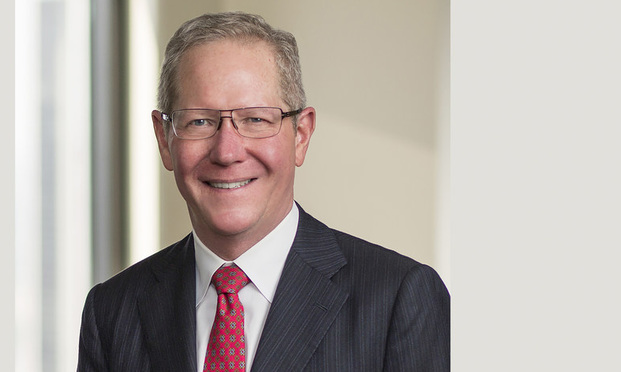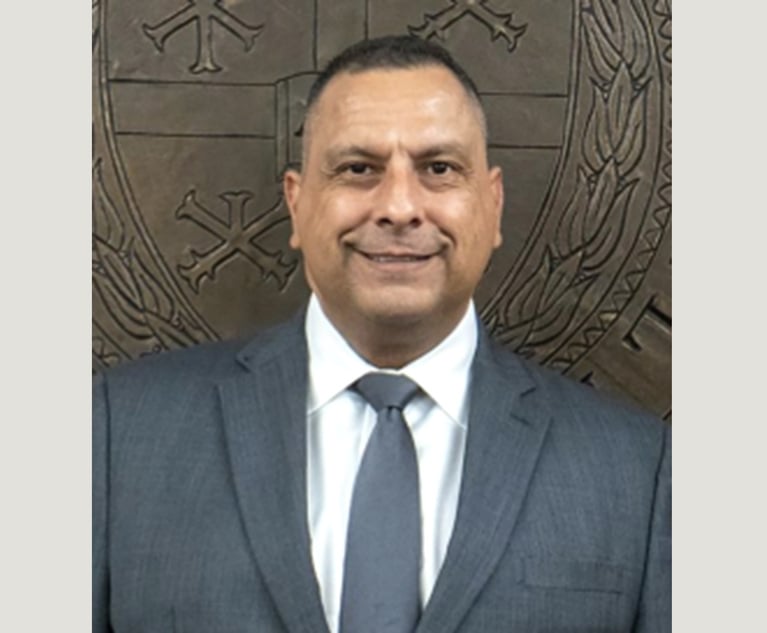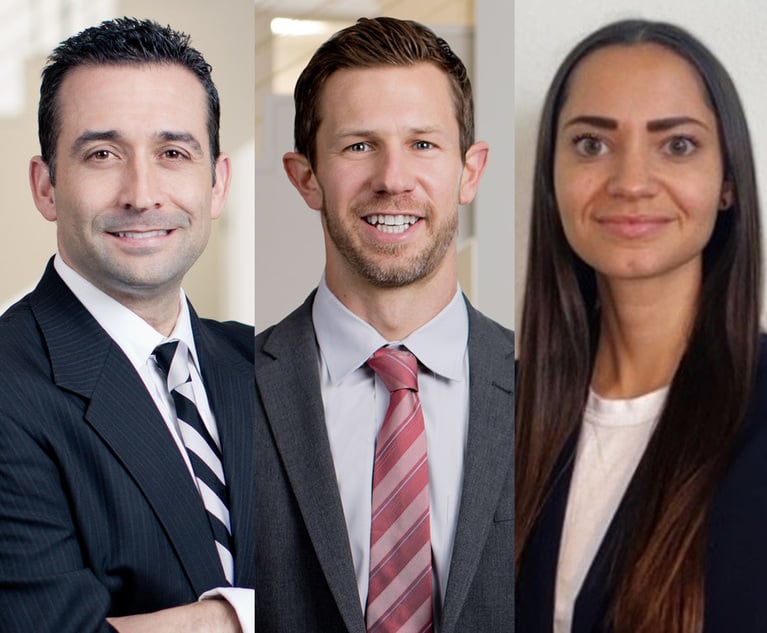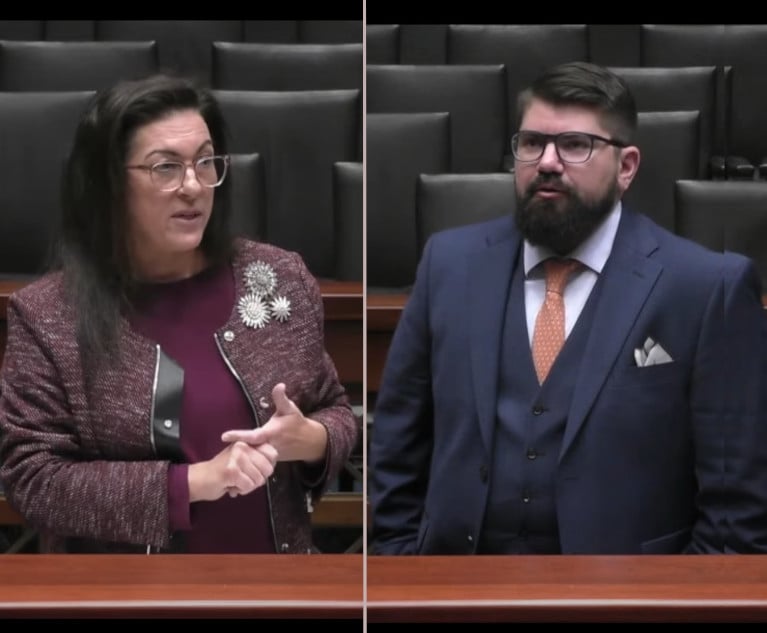SMU Law to Launch First Amendment Clinic With Stanton Foundation Funding
The law school in Dallas has received $900,000 from the organization, which since 2018 has pledged money for First Amendment clinics at Arizona State; Washington University in St. Louis; the University of Georgia and Tulane University.
October 22, 2019 at 01:02 PM
4 minute read
 Tom Leatherbury. (Courtesy photo)
Tom Leatherbury. (Courtesy photo)
A year from now, students at the Southern Methodist University Dedman School of Law may be helping investigative reporters gain access to public records.
Or they could be helping publishers defend themselves from libel actions. Or perhaps they will be filing amicus briefs in First Amendment cases.
The law school in Dallas is the latest to announce plans to launch a First Amendment clinic, joining a rapidly growing cohort of campuses with such programs. SMU's clinic will come online in the fall of 2020, with $900,000 in funding from the Stanton Foundation—an organization dedicated to the protection of the First Amendment.
"I think there is huge renewed interest in government transparency, with the rise of non-profit journalism and some of the investigative pieces they've been responsible for," said Tom Leatherbury, a partner at Vinson & Elkins who will head up the new clinic as an adjunct. "I also think, given the financial condition of the publishing industry over the past 10 or 15 years, there's probably a lot of work that's not being done because there is no budget for it. I think these clinics will give publishers, broadcasters, freelancers and journalists more opportunity to bring those types of access motions that lawyers in private practice have, perhaps, not been willing to do."
The Stanton Foundation has been working to expand geographic access to pro bono First Amendment help though its network of clinics, Leatherbury said. The organization, which was created by former CBS News president Frank Stanton, gave Arizona State University Sandra Day O'Connor College of Law nearly $1 million in 2018 to establish its First Amendment clinic. Since then, it has pledged similar amounts to start clinics at Washington University in St. Louis School of Law; University of Georgia School of Law; and Tulane University Law School. They join existing First Amendment clinics at Yale Law School; the University of Virginia School of Law; and the University of California at Los Angeles School of Law, among others. The $900,000 gift to SMU will cover the new clinic's core operations for five years.
The proliferation of First Amendment clinics means that Leatherbury has abundant resources to draw on as he designs SMU's program over the next 10 months, he said. And a recently announced First Amendment initiative established by the Reporters Committee for Freedom of the Press and Yale's Media Freedom and Information Access Clinic will likely establish a set of best practices for handling pro bono free speech cases. The project, dubbed the Free Expression Legal Network, is a coalition of 22 law school clinics that have pledged to help journalists and documentary filmmakers.
"I think there will be some real opportunities to collaborate," he said of the Free Expression Legal Network and the growing number of First Amendment clinics. "I think the [Stanton] Foundation is investing in something that can really be meaningful on both the regional and the national levels."
Leatherbury, who heads Vinson & Elkins' appellate practice, is no stranger to First Amendment work. He has been handling such cases for the past 40 years, representing publishers and broadcasters in a broad array of free speech matters, including libel, newsgathering and access, and privacy. He has also worked with First Amendment clinics at Yale and Cornell Law School.
"We are so pleased our students will have the opportunity to work with such a gifted and experienced litigator," said SMU law dean Jennifer Collins of Leatherbury in an announcement of the new clinic.
For now, Leatherbury said he plans to spend the upcoming months lining up potential cases for the clinic to work on when it debuts in August and recruiting law students to sign up. Ideally, the students could work on a matter involving Texas' anti-SLAPP law, since those cases tend to move quickly and students could potentially see a resolution during the course of a semester.
"I've already put some lines in the water," he said. "We'll have to see what happens over the next six or eight months."
This content has been archived. It is available through our partners, LexisNexis® and Bloomberg Law.
To view this content, please continue to their sites.
Not a Lexis Subscriber?
Subscribe Now
Not a Bloomberg Law Subscriber?
Subscribe Now
NOT FOR REPRINT
© 2025 ALM Global, LLC, All Rights Reserved. Request academic re-use from www.copyright.com. All other uses, submit a request to [email protected]. For more information visit Asset & Logo Licensing.
You Might Like
View All

How Uncertainty in College Athletics Compensation Could Drive Lawsuits in 2025

'It's Like They Lynched You:' Law Professor's Discrimination Claim Reaches High Court
7 minute read
Uvalde Shooting 'Fresh in Everyone's Mind:' Lone Dissenting Judge Disagrees with School's Disciplinary Decision Over Pellet Gun
Trending Stories
- 1Miami Attorneys Secure $4M Settlement Despite Insurance Limits
- 2NY Judge Admonished Over Contributions to Progressive Political Causes
- 3Legaltech Rundown: Alexi Launches an AI Litigation Tool, Hotshot Announces Private Equity Practice Courses, and More
- 46-48. It’s Comp Time Again: How To Crush Your Comp Memo
- 5'Religious Discrimination'?: 4th Circuit Revives Challenge to Employer Vaccine Mandate
Who Got The Work
Michael G. Bongiorno, Andrew Scott Dulberg and Elizabeth E. Driscoll from Wilmer Cutler Pickering Hale and Dorr have stepped in to represent Symbotic Inc., an A.I.-enabled technology platform that focuses on increasing supply chain efficiency, and other defendants in a pending shareholder derivative lawsuit. The case, filed Oct. 2 in Massachusetts District Court by the Brown Law Firm on behalf of Stephen Austen, accuses certain officers and directors of misleading investors in regard to Symbotic's potential for margin growth by failing to disclose that the company was not equipped to timely deploy its systems or manage expenses through project delays. The case, assigned to U.S. District Judge Nathaniel M. Gorton, is 1:24-cv-12522, Austen v. Cohen et al.
Who Got The Work
Edmund Polubinski and Marie Killmond of Davis Polk & Wardwell have entered appearances for data platform software development company MongoDB and other defendants in a pending shareholder derivative lawsuit. The action, filed Oct. 7 in New York Southern District Court by the Brown Law Firm, accuses the company's directors and/or officers of falsely expressing confidence in the company’s restructuring of its sales incentive plan and downplaying the severity of decreases in its upfront commitments. The case is 1:24-cv-07594, Roy v. Ittycheria et al.
Who Got The Work
Amy O. Bruchs and Kurt F. Ellison of Michael Best & Friedrich have entered appearances for Epic Systems Corp. in a pending employment discrimination lawsuit. The suit was filed Sept. 7 in Wisconsin Western District Court by Levine Eisberner LLC and Siri & Glimstad on behalf of a project manager who claims that he was wrongfully terminated after applying for a religious exemption to the defendant's COVID-19 vaccine mandate. The case, assigned to U.S. Magistrate Judge Anita Marie Boor, is 3:24-cv-00630, Secker, Nathan v. Epic Systems Corporation.
Who Got The Work
David X. Sullivan, Thomas J. Finn and Gregory A. Hall from McCarter & English have entered appearances for Sunrun Installation Services in a pending civil rights lawsuit. The complaint was filed Sept. 4 in Connecticut District Court by attorney Robert M. Berke on behalf of former employee George Edward Steins, who was arrested and charged with employing an unregistered home improvement salesperson. The complaint alleges that had Sunrun informed the Connecticut Department of Consumer Protection that the plaintiff's employment had ended in 2017 and that he no longer held Sunrun's home improvement contractor license, he would not have been hit with charges, which were dismissed in May 2024. The case, assigned to U.S. District Judge Jeffrey A. Meyer, is 3:24-cv-01423, Steins v. Sunrun, Inc. et al.
Who Got The Work
Greenberg Traurig shareholder Joshua L. Raskin has entered an appearance for boohoo.com UK Ltd. in a pending patent infringement lawsuit. The suit, filed Sept. 3 in Texas Eastern District Court by Rozier Hardt McDonough on behalf of Alto Dynamics, asserts five patents related to an online shopping platform. The case, assigned to U.S. District Judge Rodney Gilstrap, is 2:24-cv-00719, Alto Dynamics, LLC v. boohoo.com UK Limited.
Featured Firms
Law Offices of Gary Martin Hays & Associates, P.C.
(470) 294-1674
Law Offices of Mark E. Salomone
(857) 444-6468
Smith & Hassler
(713) 739-1250






